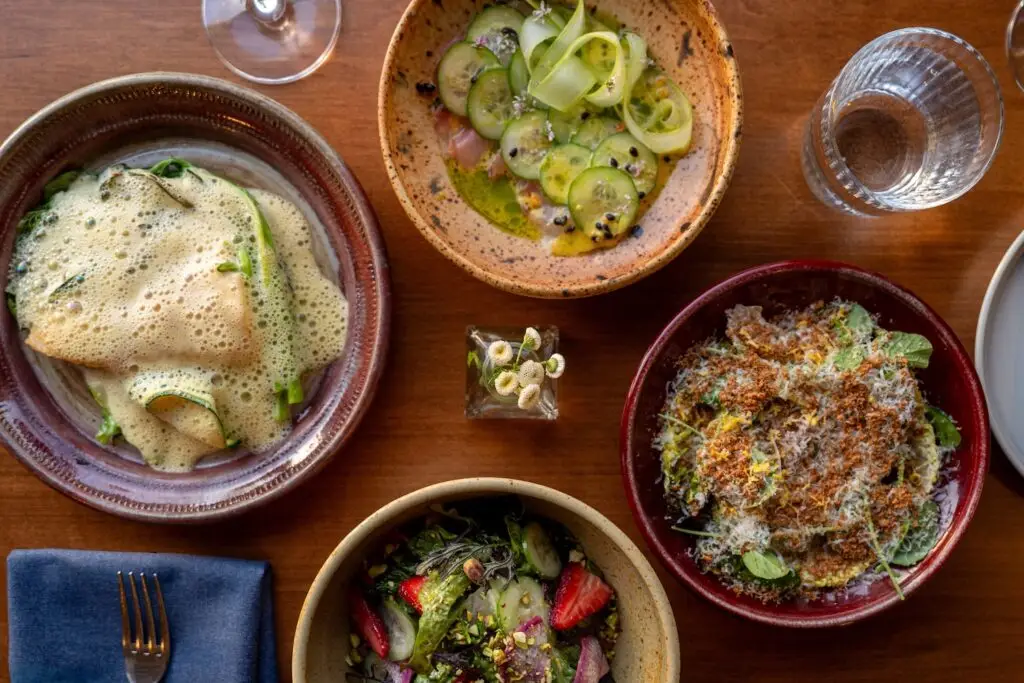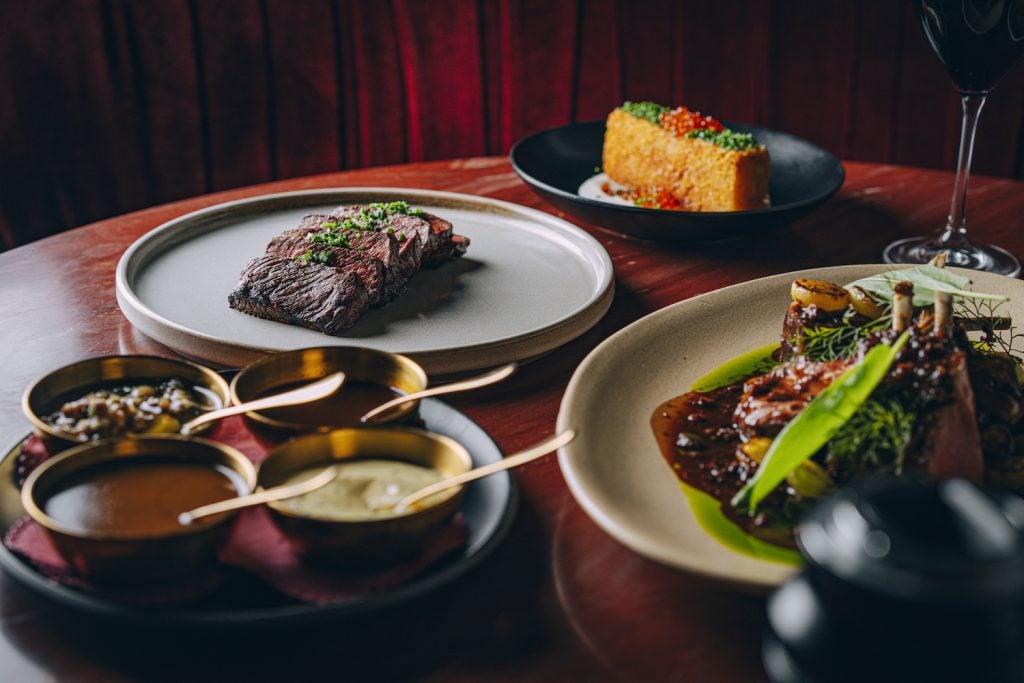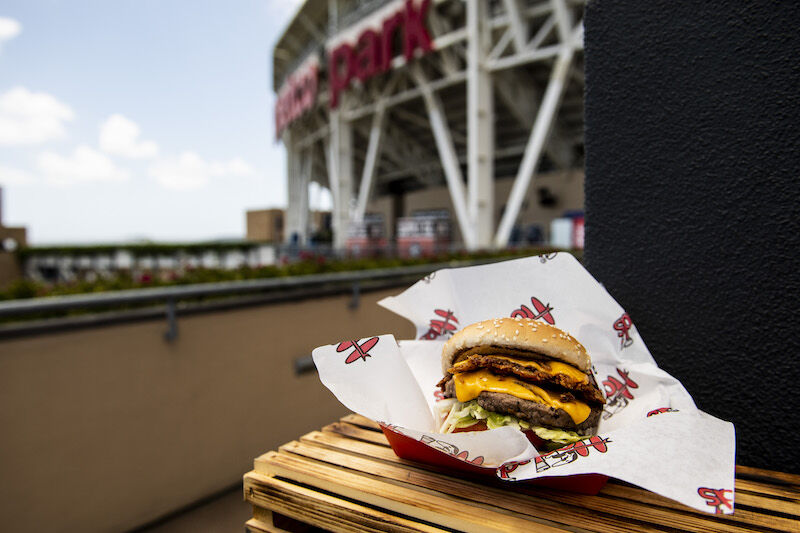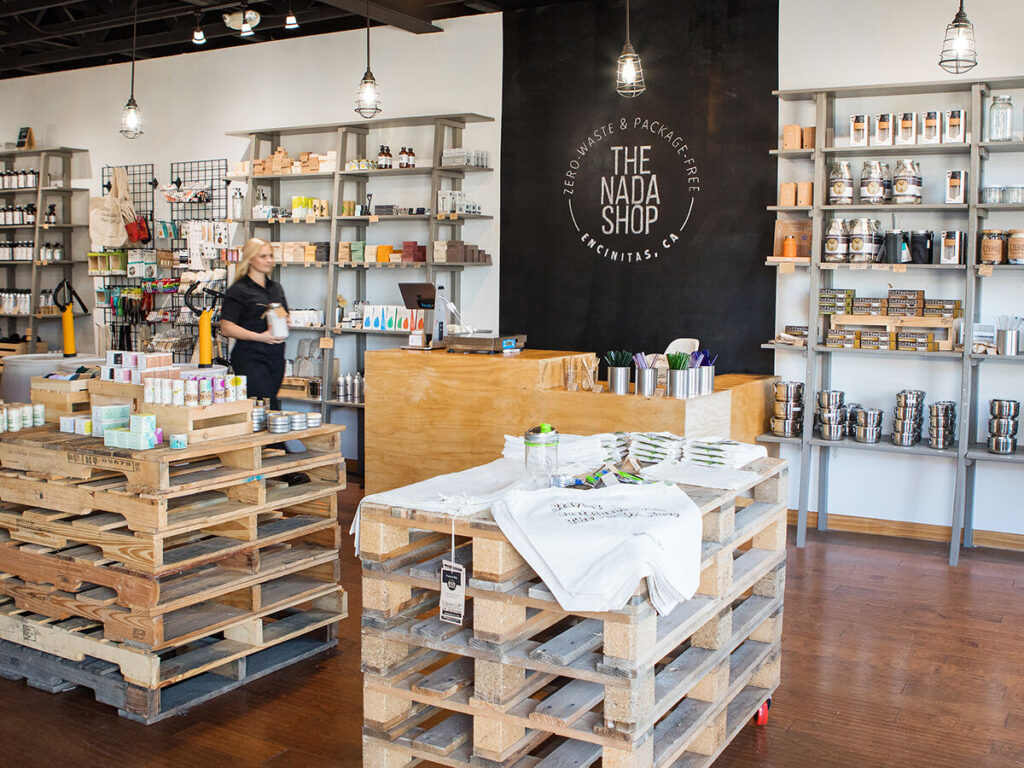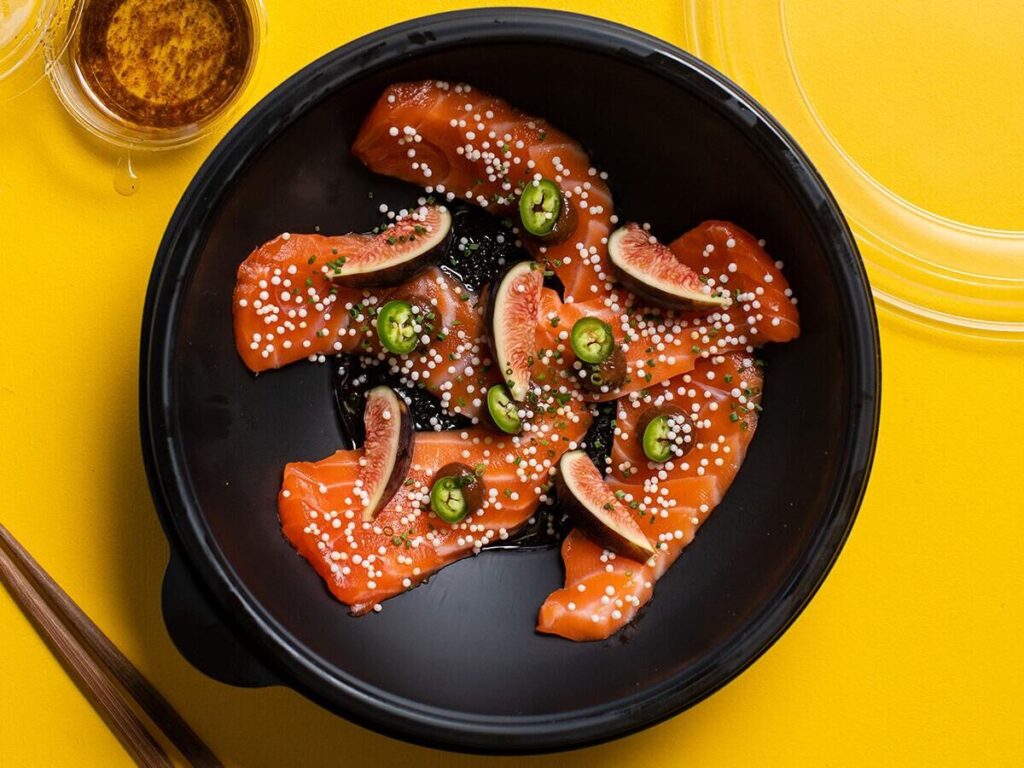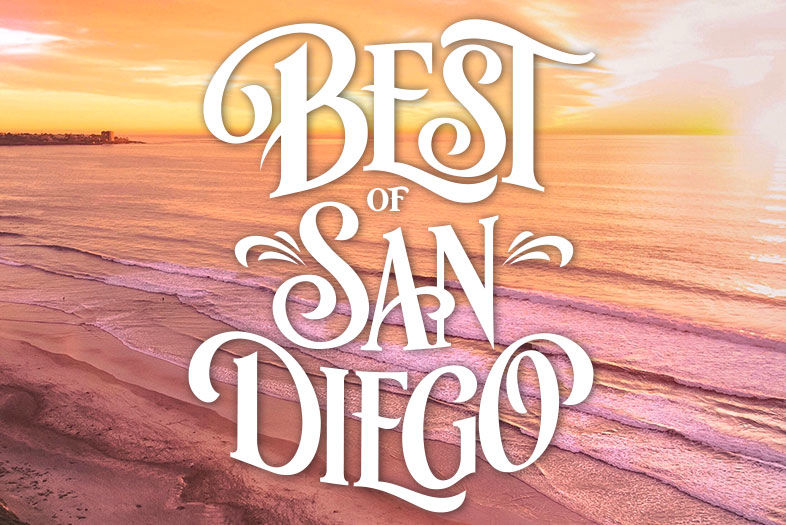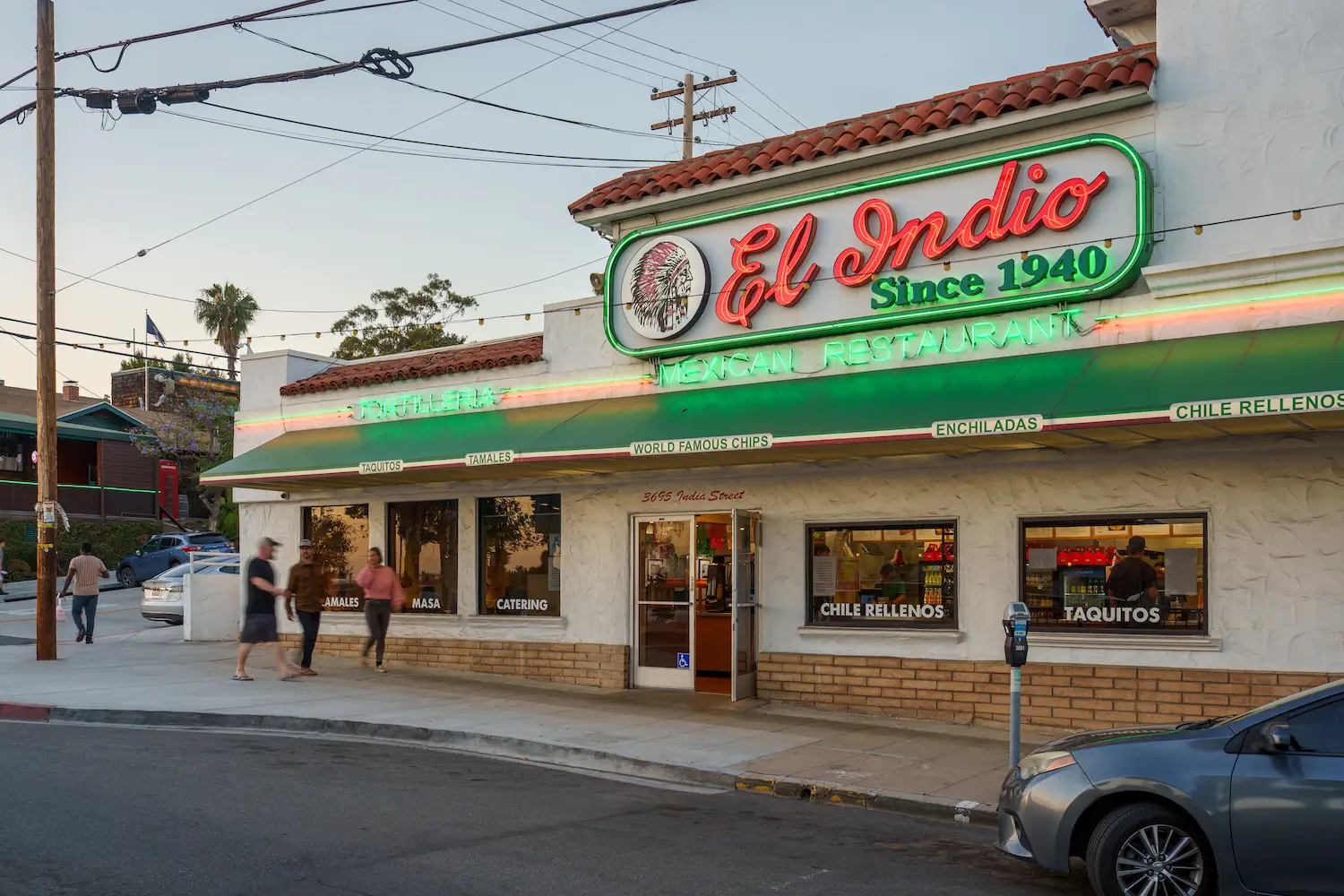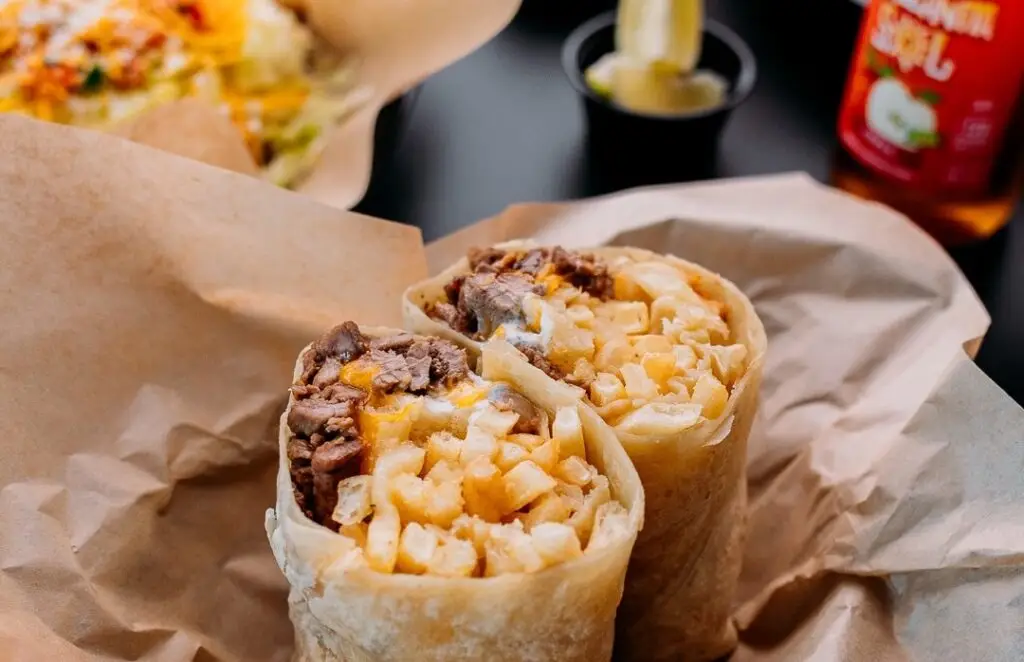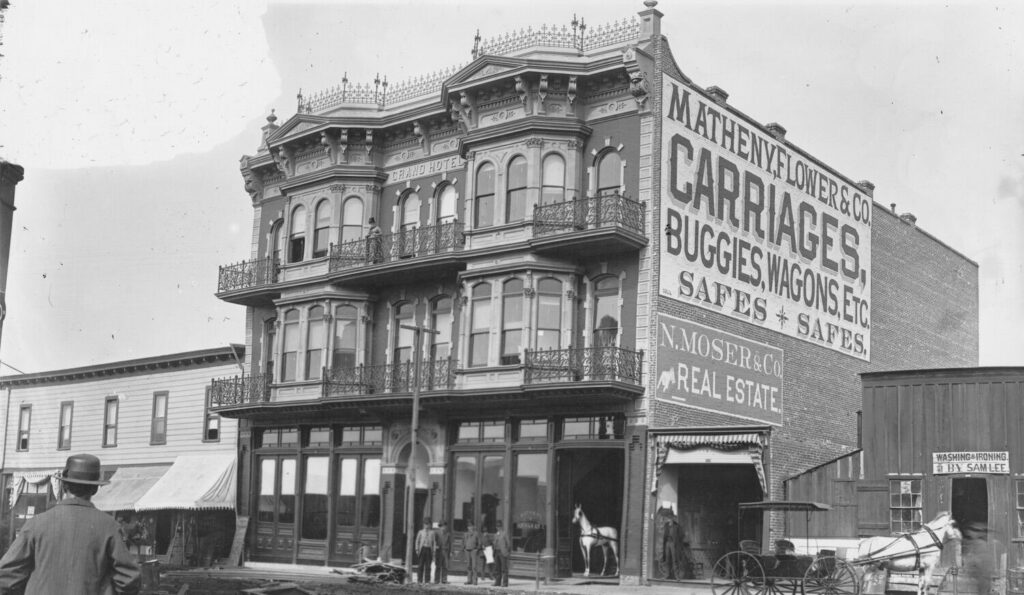Every year for the Best of San Diego issue, we ask readers to nominate and vote for a San Diego classic restaurant they want food critic Troy Johnson to review. Whichever they vote for, he goes. Last year, they sent him to Rocky’s Crown Pub. This year… Mexican classic, El Indio.
The Perfect Order: Taquitos with Everything | Chicken Tamale | Mordiditas
When you’re credited with inventing the entire concept of the taquito, pretty much every other dish you create is going to pout in that cigar-shaped shadow. Unless you sous vide a couple narwhals, the taquito is gonna dominate your story.
San Diego’s El Indio is widely cited as the global birthplace of the taquito. (Note from our nonexistent legal team: Like any food origin story, it’s contentious—many will tell you a small, rolled taco had been a staple in Mexico for generations; others claim an LA taco stand beat SD to it. But by and large, El Indio has been granted paternity for the word “taquito” and cited as the first in the US to both sell and widely popularize the iconic thing—which happens to fit our narrative nicely, so we’re leaning in.)
So, El Indio’s mordiditas are that almost-famous entourage dish that deserves more applause. Sliced segments of taquito, about the size of pigs in a blanket, are assembled in a heap on a plate and absolutely waterboarded with nacho cheese and pickled jalapeños. They’re essentially loaded taquito nachos, an idea whose glory, in a just world, will outlive us all and echo in Valhalla. They solve a longstanding problem with every single batch of nachos that has been made in humankind—that each and every chip is denied an equitable amount of cheese or load.
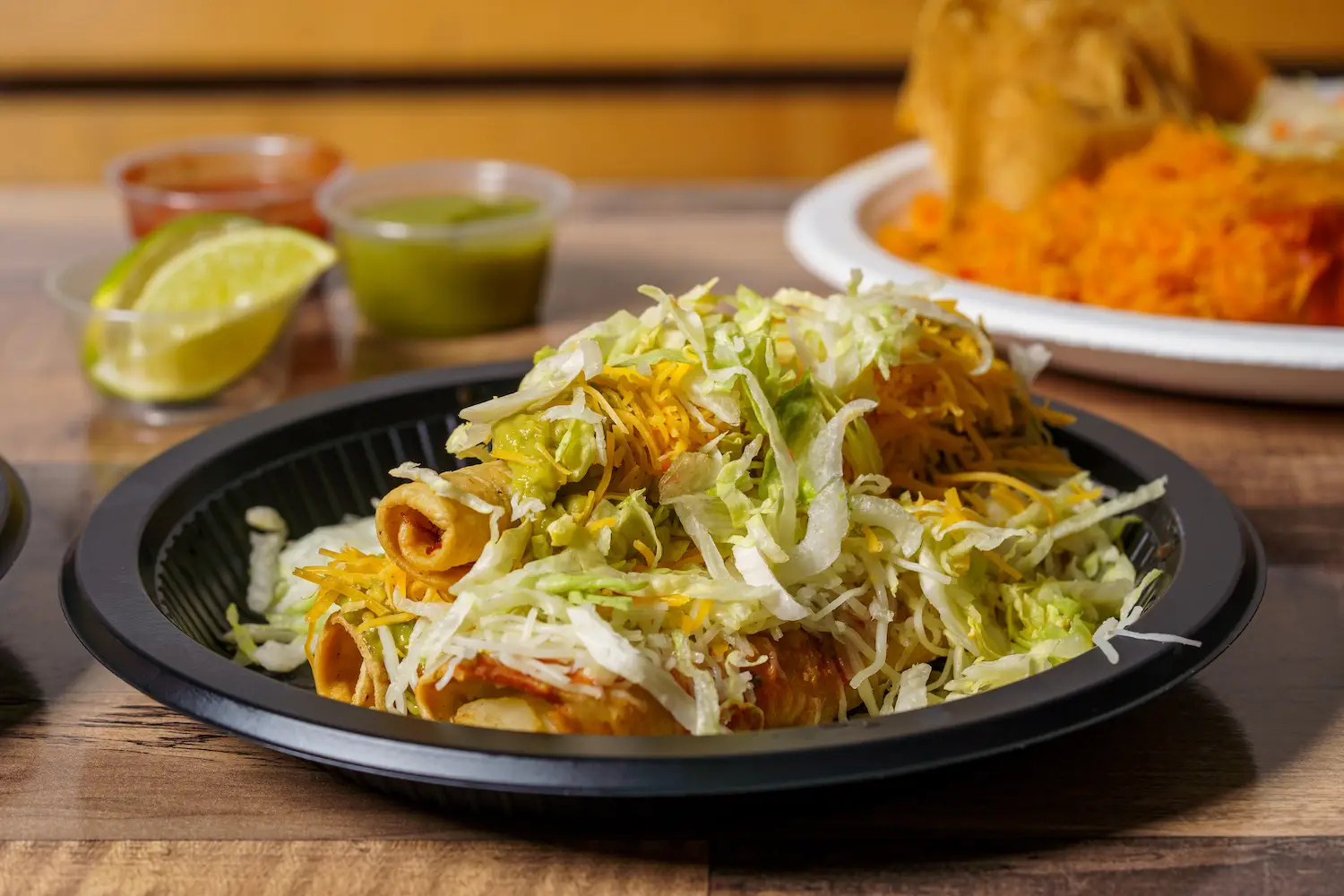
Most nachos are built as an altar to American capitalism: The top couple of chips accumulate a vast majority of the cheese and the rest of the chips just keep hearing rumors of a trickle-down until they protest. If our species ever gets cut from the roster of the universe, the fact that we put a man on the moon but could never equally dress our nachos should be examined by our successor species as a possible cause.
El Indio’s taquito rubble comes in a biblical flood of nacho cheese. It’s a snack-bar treat for people whose therapists have listened to their fantasy of placing their open, eagerly receptive mouths beneath the queso pump—albeit with far better taquitos made from scratch.
The dish isn’t gonna knock your socks off, but it’s satisfying in a calorie-gargling way, a celebration of the fact that merely entering a taco shop releases us from acknowledging the physical limits of human arteries. Would El Indio’s mordiditas be better if the cheese was scaled back and partnered with a crema, or if the cheese was lovingly dirtied with chipotle in adobo, or if they came topped with a lawn-sized pile of cilantro and onions and activated charcoal ash from the sacred cenotes of Chichén Itzá? Shut up and eat your naquitos.
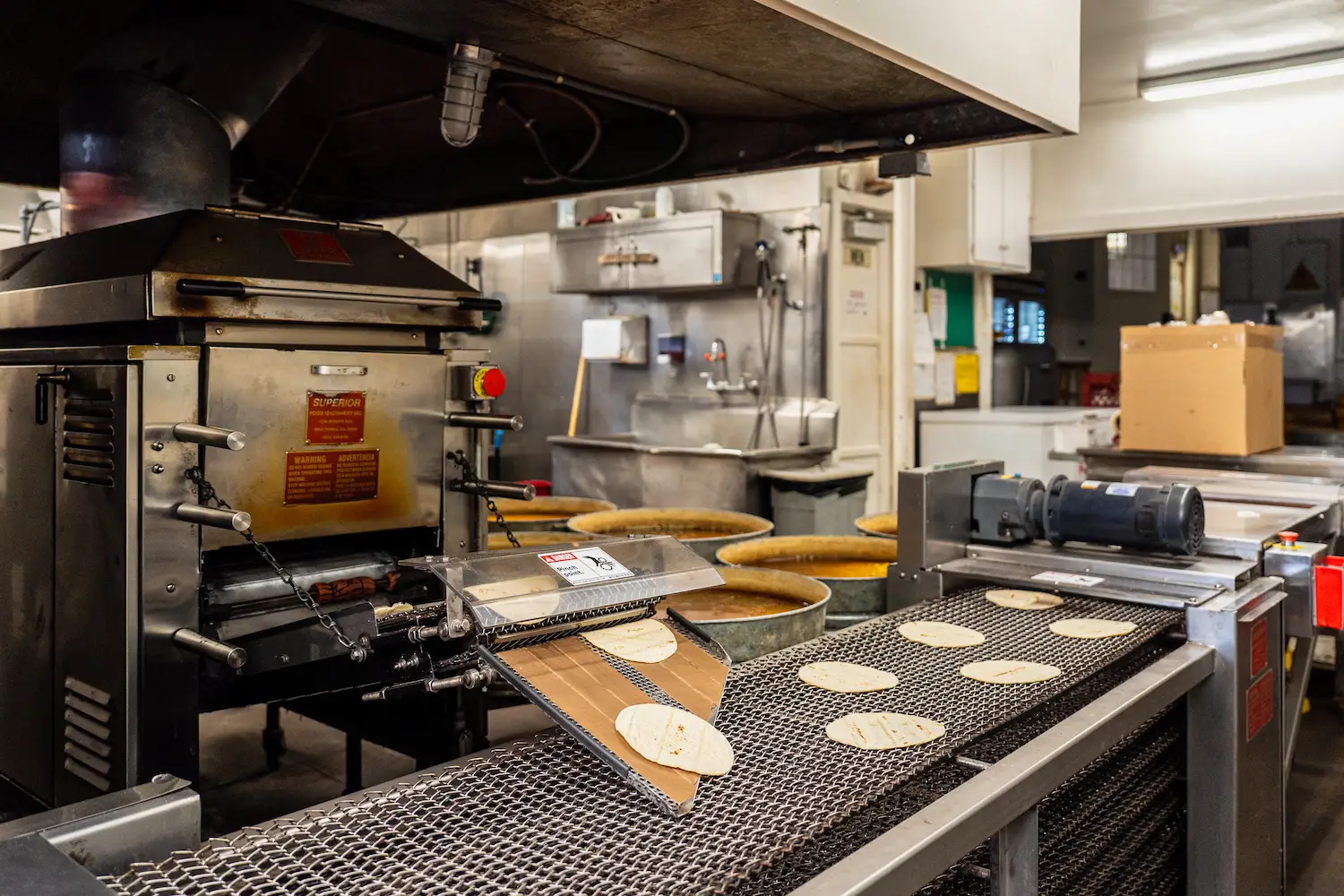
It feels simultaneously excessive and absolutely correct to say El Indio is a San Diego legend and global food icon. In 1940, Ralph Pesqueira Sr. was working in one of the many aerospace headquarters that surrounded Lindbergh Field (the SD International Airport’s original name), building planes and war machines. As a side dream, he started making and selling fresh corn tortillas by hand on the corner of Grape and India Streets.
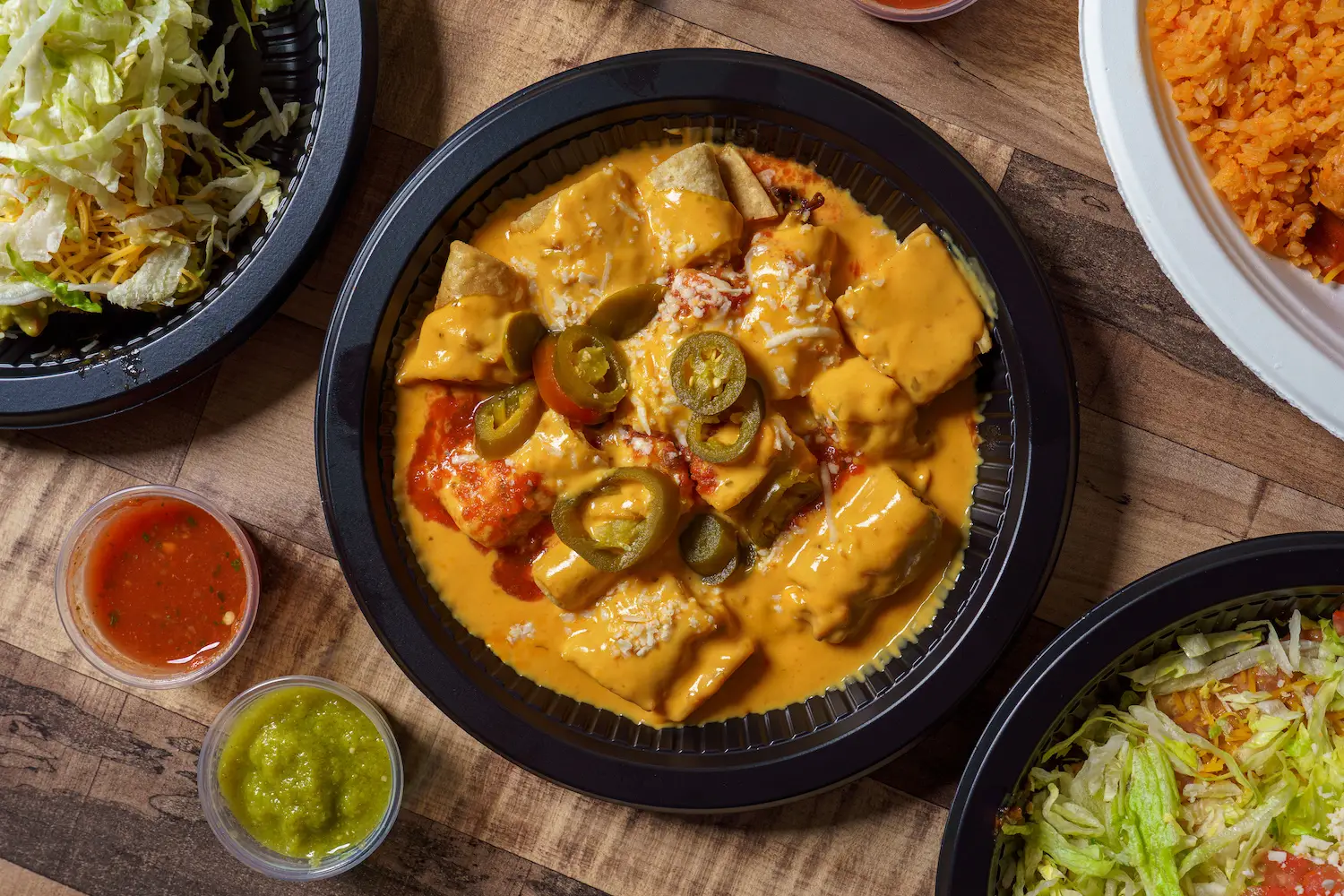
As with most food success stories, there was a key moment of technological innovation (consider In-N-Out’s invention of the two-way speaker or Pizza Hut introducing online ordering to the pie masses). Around 1945, Pesqueira—who we might call the Thomas Edison of Mexican food—invented San Diego’s first tortilla-making machine. By hand, he could whip up 30 dozen a day; with the machine, he cranked out 30 dozen an hour. A full-fledged tortilla factory was born, the effect of which was massive for putting training wheels on the local Mexican food culture that would boom decades later.
When aero coworkers asked him if he could make a handheld, good-travelin’ food for lunch pails, he thought of flautas (a Mexican staple with global roots—a flour tortilla usually wrapped around meat and rolled into the shape of a flute, then fried).
He did a smaller version with fresh masa corn tortillas. The taquito entered the world. He sold each for 18 cents.
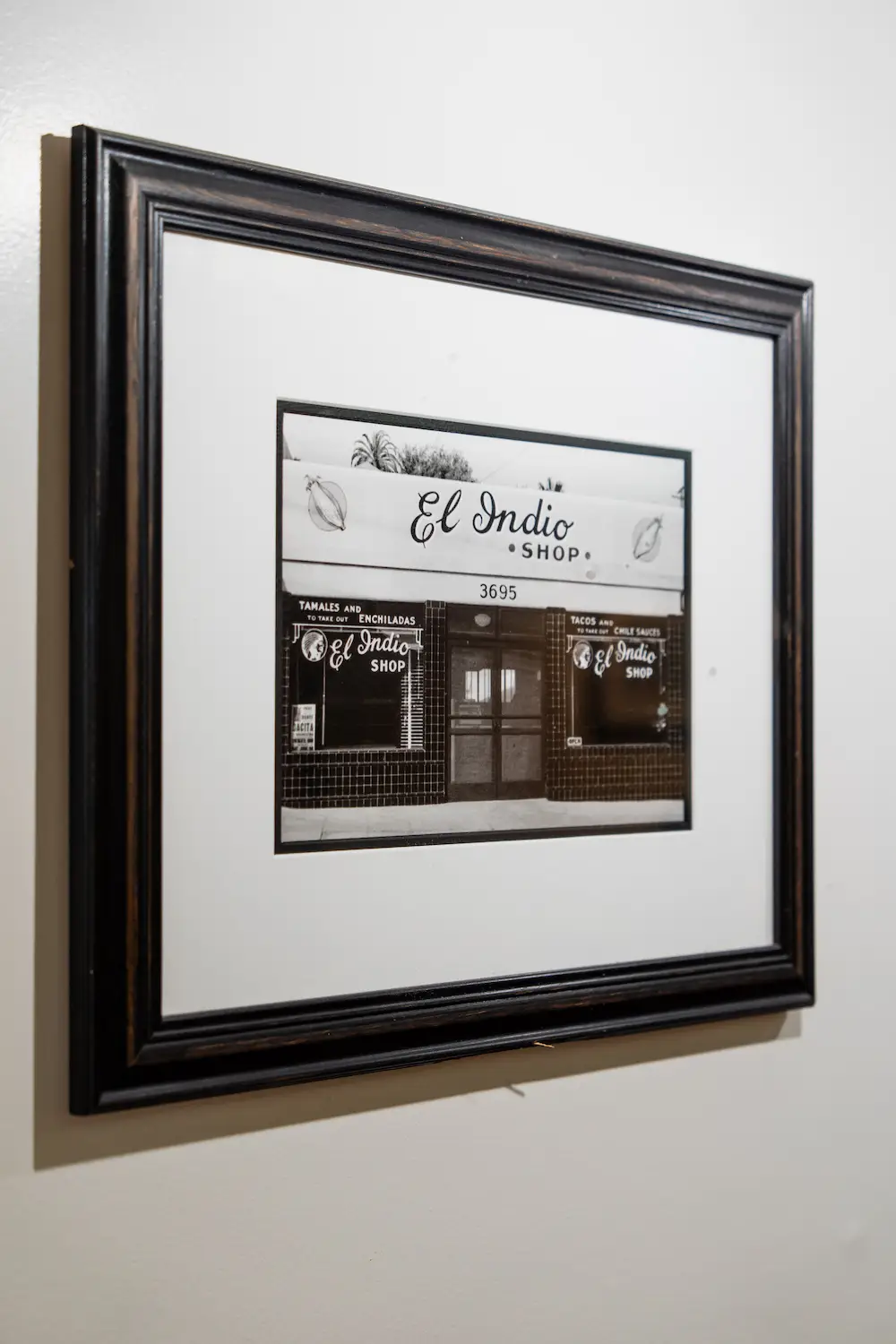
A slice of El Indio’s storied past.
The invention can’t be overstated. Sure, restaurants like Pujol and Cosme are showing us the cheffy stratospheric possibilities of Mexican cuisine, but the taquito played a huge role in getting us there. They were one of the first Mexican foods to be frozen. By 1976, frozen-food behemoth Van de Kamp was putting truckloads of them in grocery stores across the US. They were eminently affordable and, smaller than burritos, they could be microwaved or baked in a flash for any harried-parent meal situation. Dummies like adolescent me could make these.
With some cheese, sour cream, and guacamole, the San Diego invention was the gateway drug to an entire country discovering the joys of Mexican food. During WWII and the Vietnam War, El Indio sent care packages of taquitos to the front lines, a wartime MRE and meat-filled love letter from San Diego.
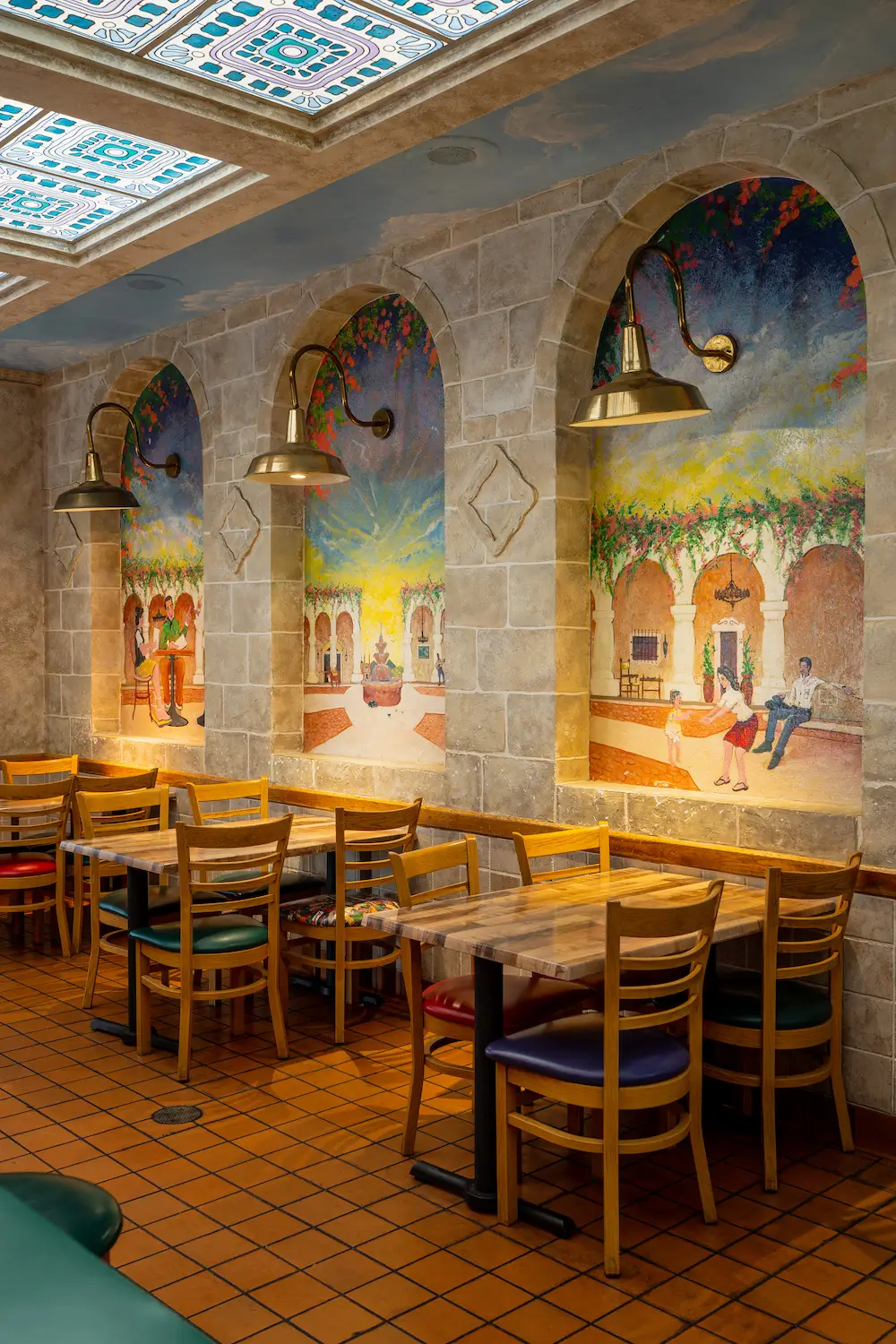
Riding high, Pesqueira opened his first restaurant, El Indio, in 1947 at the bottom of Washington Avenue in Middletown, eye-level with planes landing at Lindbergh and within lunch distance of the thousands of factory workers nearby.
These days, that part of the city is teeming with restaurants, and Little Italy, a mile up the road, is San Diego’s foodapalooza. But when El Indio opened, it owned the game. What little Mexican food the city had was mostly concentrated in Old Town (Aztec Kitchen, La Piñata) and Barrio Logan (Las Cuatro Milpas, El Carrito).
The 5, now a half-block away, didn’t even exist (it was finished in 1960), and Little Italy was still mostly sleepy and on the edge of a massive downturn (35 percent of the neighborhood was destroyed in constructing the I-5, and it took decades to rebuild the community and culture). For a huge chunk of San Diegans, El Indio was the first bite of Mexican food.

The man, the myth, the taquitoist.
Now Middletown is its own modest food and drink destination with Gelato Vero (opened 1984), Saffron Thai (1985), Shakespeare Pub (1990), Blue Water Seafood (2004), Lucha Libre Taco Shop (2008), and The Regal Beagle (2010) all within spitting distance. And, despite quantum leaps in Mexican food quality, El Indio still stands nearly 80 years later, serving what is pretty close to the original taquito recipe. Pesqueira passed it to his son, Ralph Jr., who grew up behind the register. Now it’s run by Ralph Jr.’s daughter, Jennifer Pesqueira.
I’ve learned that the best way to maximize your appreciation for El Indio is to read Yelp before you go. I’ll often skim the review app for hidden tips and tricks and secret menu orders. Once on the app, you encounter the wildest, most emotionally nuclear forms of humanity, just absolutely obliterating family-run restaurants near and far. And you’ll run into this missive a lot: “El Indio is living off its history and has fallen from actual glory, refusing to evolve and keep up with modern Mexican food standards.”
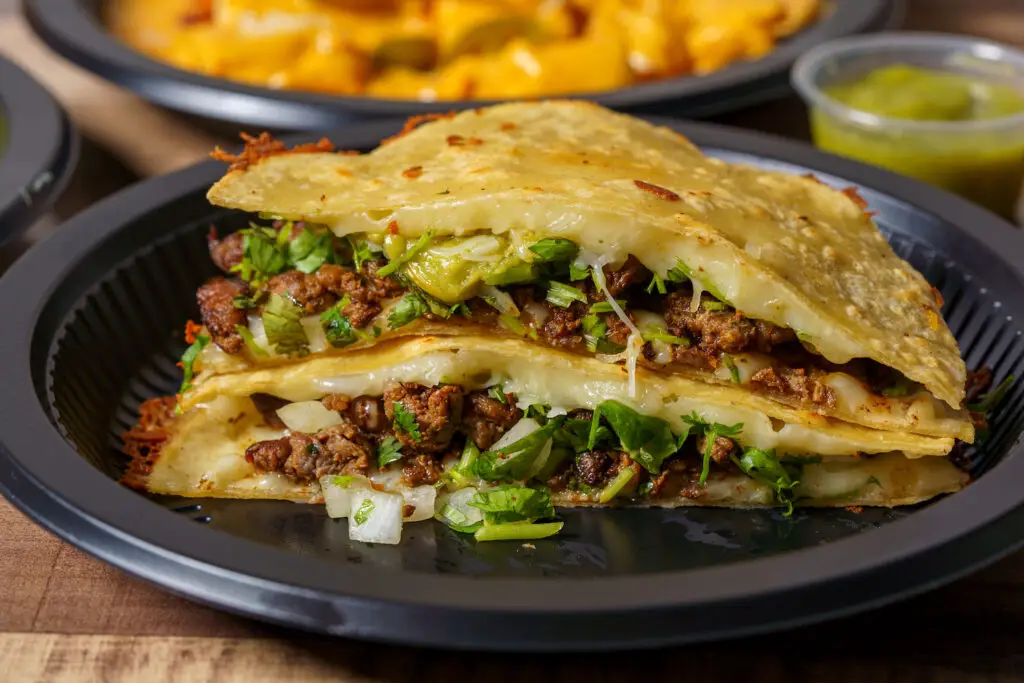
To which I’d say, they’re both correct and full of crap. We live in the age of the tweezer taco—heirloom and non-GMO and fire-roasted and microgreened; farmers market arugulas replacing bulk cabbage; Wagyu asadas and Jidori adobos. Those tacos are their own little heavens. I’m glad we got ’em, and it makes sense that they cost more.
But that’s not what you go to El Indio for, nor is it what the restaurant is trying to be. It makes fresh masa tortillas, chips, and taquitos and doesn’t put tuxes on ’em. It’s both basic and affordable. Is El Indio living off its history? Yep, a history earned. Ride that prize stallion until it bucks you off and lies down in a meadow.
Is it refusing to evolve? A little. You have one job when you invented the taquito: Don’t mess with it. But it could extend itself a little at the salsa bar. The world of salsas has hit a magical evolutionary waystation, with so many different peppers and fermented things. El Indio’s salsas are fine but pretty basic. It could be the restaurant’s R&D lab for the future.
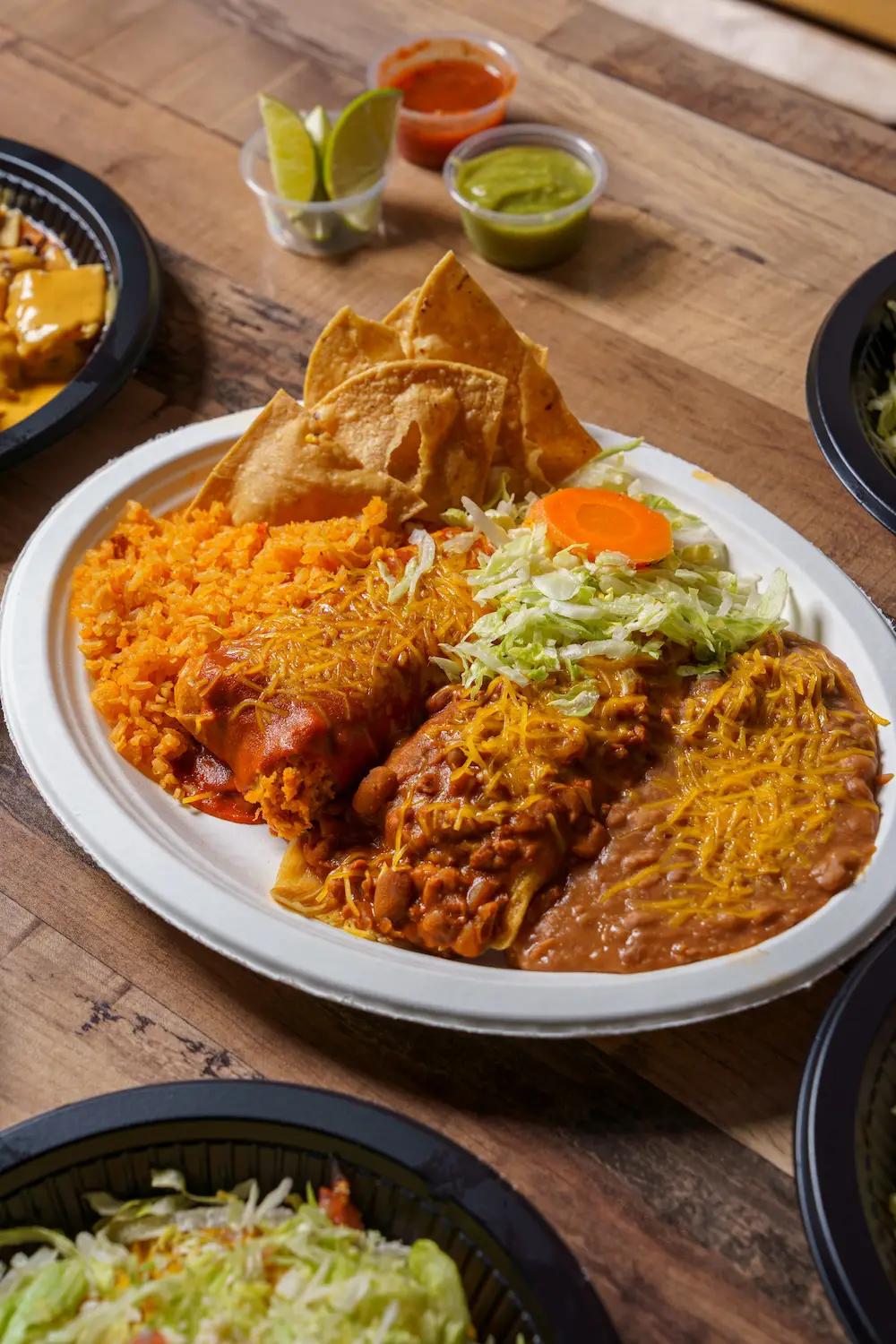
Enchiladas, smothered within an inch of their life.
The taquito? It’s good. Crispy-soft, a straight-shooter. The problem with many taquitos is that their makers confuse it with a tortilla chip, making it all crunch. El Indio knows better. The best is the potato-filled taquito. Like you lightly fried a Thanksgiving side dish.
The biggest shine at El Indio may be the tamales. The masa has real flavor, corny and distinctive. And the kitchen stuffs it with generous amounts of beef, chicken, or cheese. A lot of tamales only give you a sliver of meat, so it’s like two burger buns with a single piece of prosciutto in the middle. El Indio knows tamal balance. The chicken tostada is also a winner. The entire table will devour it.

For people who come from the double-thick tortilla chip lineage, El Indio chips are fresh-made, sturdy, famous beasts.
I know it’s famous for its chips, but its chip is not my chip. The kitchen team is of the double-thick clan, so it takes some jaw muscle and resolve to bite through their chips, like you’re eating deep-fried pig ears. I’m of the thin-chip people—I prefer a lighter bite and maybe even just the tiniest bit of softness in the center.
El Indio is exactly what it has always been and always probably will be: a historical landmark taco shop that makes the most important thing—the tortilla—from scratch. It has less than zero interest in winning a James Beard Award.
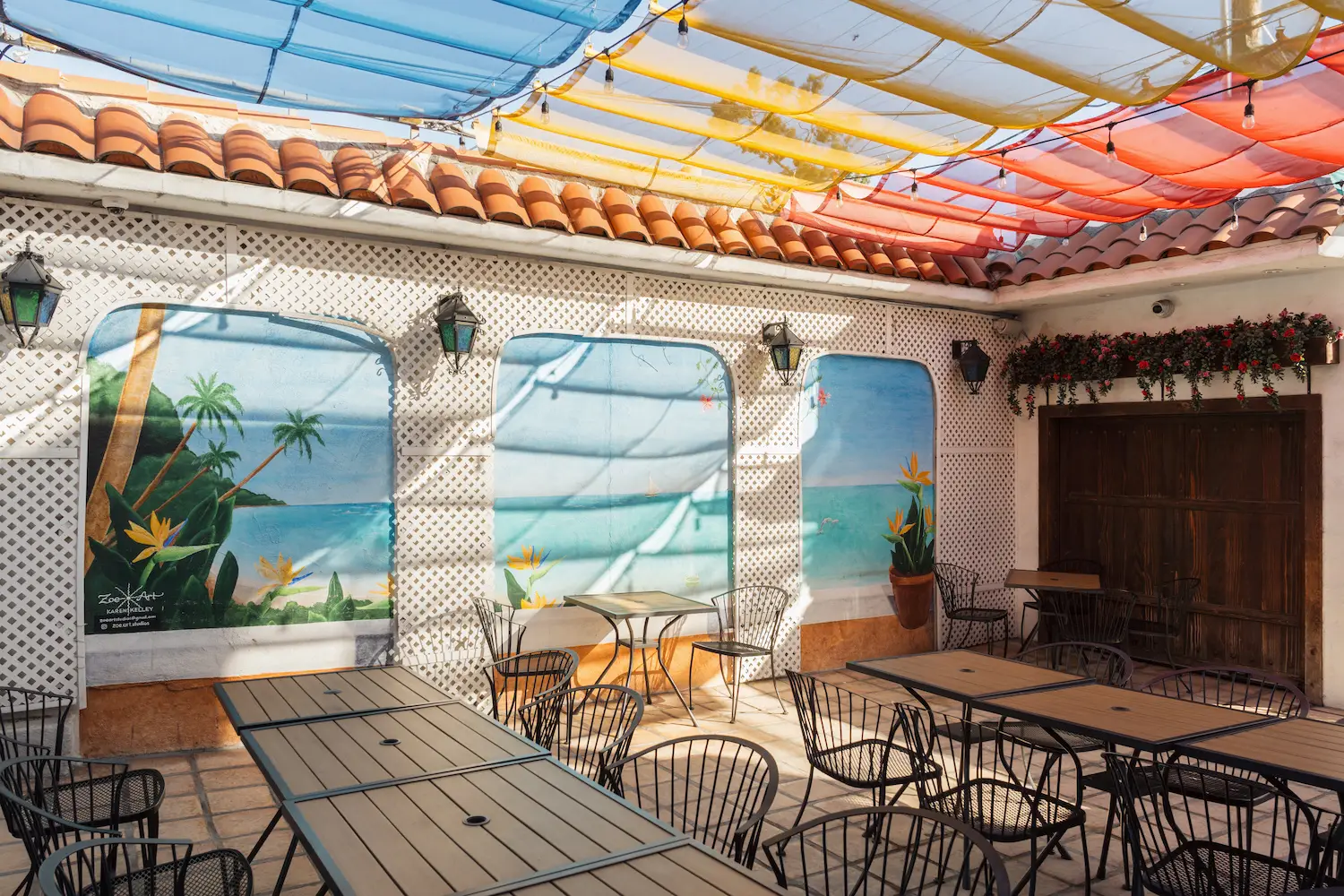
The garden patio in search of a garden.
My only serious qualm with El Indio is that there’s absolutely no garden on its “garden patio.” Have you ever been to a friend’s house where the backyard has the military-grade steel screen door? And that leads into a lot of concrete and a “garden” of white rocks? This isn’t as bad as that, but it’s not too far off. No living flowers or shrubs. Just a few fake flowers. Few things are as depressing as fake flowers. You took a living, breathing, lovely pillar of all life on earth and turned it into a microplastic that is slowly making its way into our DNA and transforming us into a dollar store from the inside out.
PARTNER CONTENT
I get it—few things except hope are tougher to keep alive than flowers and plants. And I don’t want El Indio to go the Instagram plant-wall route with a neon sign spelling out some life-coach phrase. But the only living things we see are an older couple who look like they’ve finally smuggled enough drugs out of Miami on their sailboat to just kind of float to beach towns and eat taquitos.
Imagine if El Indio could somehow build a garden taquito oasis. It would be wondrous, an attraction. But that feels like too much to ask. Someone call Robert Irvine.
